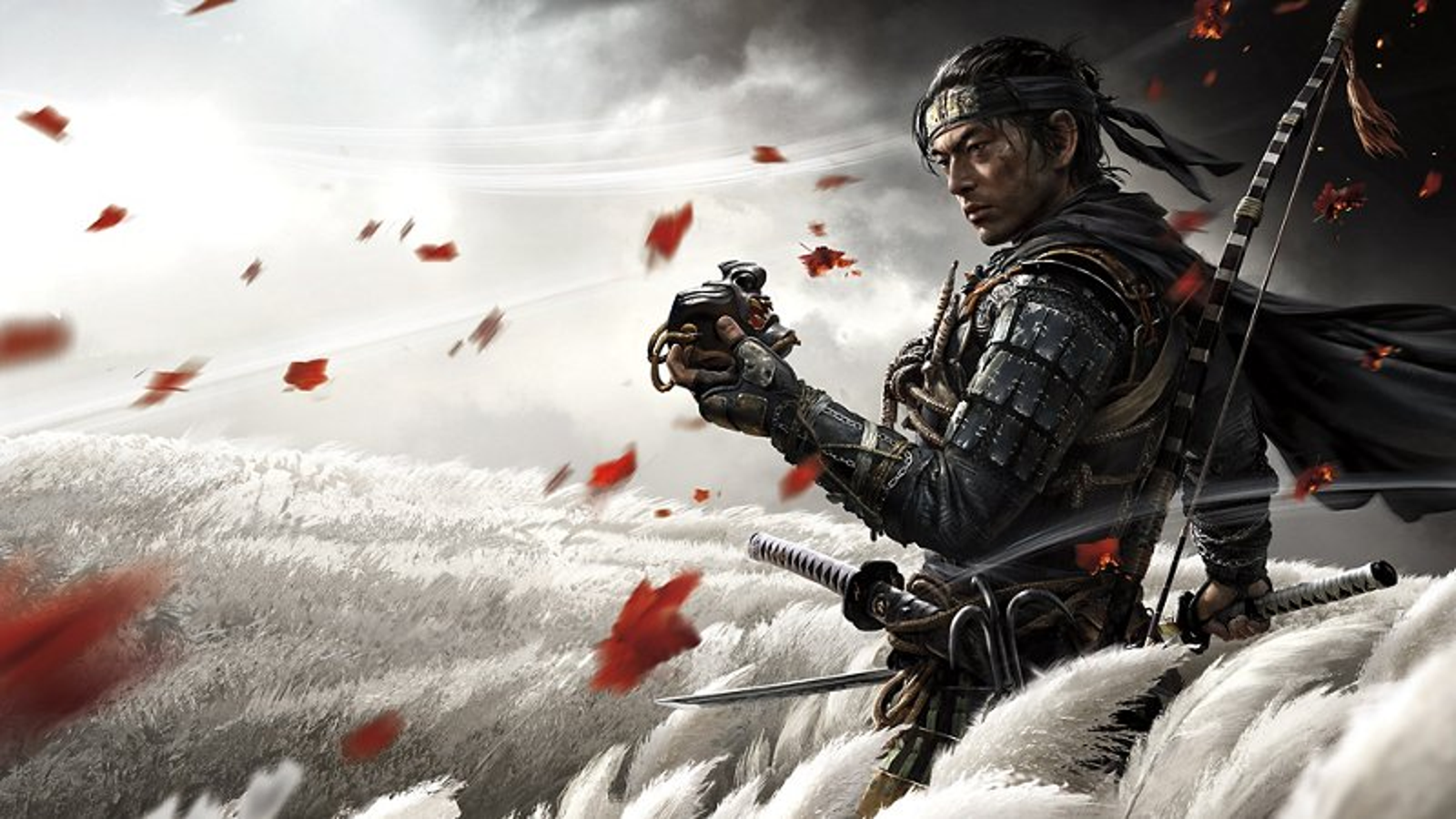In the ever-evolving landscape of video games, it’s rare for a title to maintain its relevance and impact several years after its initial release. However, Ghost of Tsushima, the 2020 action-adventure game from Sucker Punch Productions, has managed to do just that. Four years later, the game continues to captivate players with its stunning visuals, engaging gameplay mechanics, and emotionally resonant story. The release of the Director’s Cut in 2021 further enhanced the experience, adding new content and quality-of-life improvements that keep the game feeling fresh and compelling.
As we examine the enduring appeal of Ghost of Tsushima, it’s clear that the game’s success lies in its meticulous attention to detail, its respect for the player’s time and intelligence, and its ability to deliver a focused, high-quality experience that stands out in an industry often obsessed with maximizing content and playtime.

A Breathtaking Open World
At the heart of Ghost of Tsushima’s lasting appeal is its gorgeously realized open world. Set in feudal Japan during the Mongol invasion of 1274, the game’s rendition of the island of Tsushima is a marvel of artistic design and technical achievement. From the lush, windswept grasslands to the tranquil bamboo forests and the snow-capped mountains of the north, every environment feels meticulously crafted and bursting with detail.
What sets Ghost of Tsushima’s world apart from other open-world games is its emphasis on beauty, simplicity, and emotional resonance.
Rather than overwhelming the player with endless waypoints and objective markers, the game uses subtle visual cues and a minimalist UI to encourage organic exploration. The now-iconic “guiding wind” mechanic, which gently directs the player towards their objectives, is a perfect example of how the game integrates its systems into the narrative and world-building.
This attention to detail extends to the game’s dynamic weather system, day/night cycle, and the way the environment reacts to the player’s presence.
Grass sways in the wind, leaves rustle as you brush past them, and rain spatters on Jin’s armor during a storm. These small touches add up to create a world that feels alive and responsive, drawing the player deeper into the setting and story.
Of course, the game’s visuals are only one part of what makes its world so compelling. Ghost of Tsushima’s map is divided into three distinct regions, each corresponding to a different act in the story. As the player progresses through these regions, they encounter increasingly challenging enemies and more valuable rewards, creating a sense of progression and mastery that keeps the gameplay engaging even in the later stages.
Balanced against this sense of progression is a careful attention to pacing and variety. The game’s main story missions are interspersed with side quests, random encounters, and exploration opportunities that flesh out the world and characters. These diversions never feel like filler content, thanks to the game’s strong writing and characterization. Even the simplest fetch quest is elevated by the NPCs’ dialogue and the way their stories intersect with the larger narrative.

Engaging Combat and Progression
Another key factor in Ghost of Tsushima’s enduring appeal is its satisfying combat system. Drawing inspiration from classic samurai films and the rhythmic, block-and-parry gameplay of titles like Sekiro: Shadows Die Twice, the game’s combat is a blend of style and substance that feels both rewarding and authentic to the setting.
At the core of the combat system are a handful of basic mechanics: light and heavy attacks, parrying, dodging, and stances.
These elements are introduced gradually over the course of the game, allowing the player to master each technique before moving on to the next. What makes the system so engaging is the way these mechanics interact with each other and the player’s environment.
For example, Jin’s stances are each effective against different enemy types, encouraging the player to switch between them on the fly to adapt to the situation. The stone stance, which breaks enemy shields, flows seamlessly into the water stance, which excels against agile swordsmen. Add in the ability to parry, dodge, and counterattack, and each encounter becomes a tense, dynamic dance that rewards skill and situational awareness.
As the player progresses through the game, they unlock new weapons, armor sets, charms, and upgrades that further customize their playstyle. The “Ghost weapons,” such as kunai and smoke bombs, add an element of stealth and trickery to Jin’s arsenal, while the various armor sets provide bonuses to specific play styles, such as increased damage or faster stealth kills.
This progression system is carefully balanced to provide a sense of growth and mastery without overwhelming the player with choices.
By focusing on a smaller set of meaningful upgrades and customization options, Ghost of Tsushima avoids the bloat and complexity that can sometimes plague open-world RPGs.
Of course, no combat system is perfect, and Ghost of Tsushima has its share of flaws. Some players may find the stealth mechanics to be overly simplistic, with predictable AI and limited options for ghosting through enemy camps. Others may grow tired of the game’s reliance on its three basic enemy archetypes: swordsmen, shieldmen, and spearmen.
However, these criticisms feel minor in the face of the game’s overall combat experience. The visceral thrill of parrying a killing blow, the satisfaction of clearing a Mongol camp without raising an alarm, and the cinematic flair of Jin’s special attacks all come together to create a system that feels consistently rewarding and true to the game’s themes and inspirations.

A Compelling Story and Characters
Ghost of Tsushima’s narrative is another area where the game shines, thanks to its well-drawn characters, emotional stakes, and thematic depth. The story follows Jin Sakai, one of the last surviving samurai on Tsushima Island, as he struggles to defend his home against the invading Mongol army. Faced with the brutal realities of war and the limitations of his honorable code, Jin must embrace the way of the Ghost, using stealth, deception, and unconventional tactics to even the odds against his enemies.
What makes Jin’s story so compelling is the way it explores the tension between duty and morality, tradition and adaptation.
As Jin travels across the island, he encounters a cast of supporting characters who challenge his worldview and force him to question the rigid samurai code that has defined his life. These include Yuna, a thief who becomes Jin’s closest ally; Sensei Ishikawa, a legendary archer haunted by his past; and Lord Shimura, Jin’s uncle and the embodiment of samurai tradition.
Each of these characters is well-written and fully realized, with their own arcs and motivations that intersect with Jin’s in meaningful ways.
The game’s side quests and character-specific missions do an excellent job of fleshing out these relationships and adding depth to the world and story.
However, it’s Jin’s internal struggle that forms the emotional core of the narrative. As he adopts the persona of the Ghost, Jin must grapple with the moral implications of his actions and the way they challenge his samurai identity. This conflict is explored through a series of powerful flashbacks and dream sequences that delve into Jin’s past and his relationship with his father, a legendary samurai who was killed by the Mongols.
These moments are some of the game’s most emotionally resonant, thanks to the strong performances and the way they use the game’s mechanics to reinforce the narrative themes.
In one particularly memorable sequence, Jin must navigate a burning castle while reliving the trauma of his father’s death, using his Ghost techniques to sneak past the flames and confront his deepest fears.
It’s a testament to the game’s storytelling that even its most action-packed moments feel grounded in character and theme.
The climactic battle against the Khan, the leader of the Mongol invasion, is not just a test of the player’s combat skills, but a culmination of Jin’s personal journey and the choices he has made along the way.
While the game’s story is not without its flaws – some players may find the pacing to be uneven, particularly in the second act, and there are occasional moments of narrative contrivance – it remains a powerful and affecting tale that lingers long after the credits roll.

The Director’s Cut and Post-Launch Support
One of the reasons Ghost of Tsushima still feels so relevant four years after its release is the strong post-launch support it has received from Sucker Punch Productions. The Director’s Cut, released in 2021, added a wealth of new content and features that expanded on the base game’s strengths and addressed some of its weaknesses.
The most significant addition in the Director’s Cut is the new Iki Island expansion, which adds a substantial new area to the game’s map and a self-contained story that ties into Jin’s personal journey.
Iki Island is a stunning showcase of the game’s visual design, with diverse landscapes that range from sandy beaches to misty mountains. The expansion also introduces new enemy types, such as the shamans who can buff their allies, and new gameplay mechanics, like the ability to charge enemies on horseback.
But it’s the expansion’s story that really shines, delving deeper into Jin’s past and the legacy of his father. The central conflict revolves around a Mongol tribe led by a mysterious woman known as the Eagle, who uses hallucinogenic poison to control her followers. This allows the game to explore themes of trauma, addiction, and the cycle of violence, as Jin must confront his own inner demons and the consequences of his actions.
The Director’s Cut also includes a range of quality-of-life improvements and technical enhancements, particularly on the PlayStation 5. The game now runs at a smooth 60 frames per second, with faster load times, haptic feedback, and adaptive trigger support. The inclusion of Japanese lip-syncing is a particularly welcome addition, adding to the game’s immersion and authenticity.
Another major addition in the Director’s Cut is the inclusion of the “Legends” multiplayer mode, which was originally released as a free update in late 2020.
Legends is a cooperative experience that allows players to team up and take on a series of challenge missions and raids, earning new gear and cosmetics along the way. While not as narratively rich as the single-player campaign, Legends is a fun and engaging way to extend the game’s lifespan and experience its combat and stealth mechanics in a new context.

Conclusion
Four years after its initial release, Ghost of Tsushima remains a landmark achievement in open-world game design and a testament to the power of focused, well-crafted experiences. Its stunning visuals, engaging combat, and emotionally resonant story come together to create a game that feels timeless and essential, even as the medium continues to evolve and change.
What sets Ghost of Tsushima apart from its peers is the way it respects the player’s time and intelligence, delivering a tight and polished experience that never feels bloated or padded. By focusing on quality over quantity, and by carefully integrating its systems and mechanics into its narrative and world-building, the game achieves a rare level of cohesion and purposefulness.
This is not to say that Ghost of Tsushima is a perfect game, or that it is without its flaws. Some players may find the repetitive nature of its open-world activities to be grating, and there are certainly moments where the game’s mechanics and storytelling falter or feel contrived. But these issues feel minor in the face of the game’s overall achievement, and the way it consistently delivers on its core promises and themes.
Perhaps most importantly, Ghost of Tsushima feels like a game that respects its audience and its source material, treating both with a level of care and attention to detail that is all too rare in the modern gaming landscape.
It is a celebration of Japanese culture and history, a love letter to the samurai genre, and a powerful example of how video games can combine artistry and interactivity to create truly transportive experiences.

As we look to the future of the medium, and the inevitable sequels and follow-ups to Ghost of Tsushima, it’s clear that the game has set a high bar for what open-world games can and should be. By prioritizing quality, polish, and emotional resonance over sheer scale and spectacle, it has shown that there is still a place for focused, well-crafted single-player experiences in an industry increasingly dominated by live service games and endless content updates.
For players who have yet to experience the game, or those who are considering revisiting it with the Director’s Cut, Ghost of Tsushima remains an essential and rewarding experience that showcases the best of what gaming has to offer. Its enduring appeal is a testament to the skill, vision, and passion of its developers, and a reminder of the power of interactive storytelling to transport us to new worlds and challenge us to see our own in a different light. In an industry that often seems obsessed with chasing trends and maximizing profits, Ghost of Tsushima feels like a beacon of hope, a game that dares to prioritize artistry and emotion over all else.






